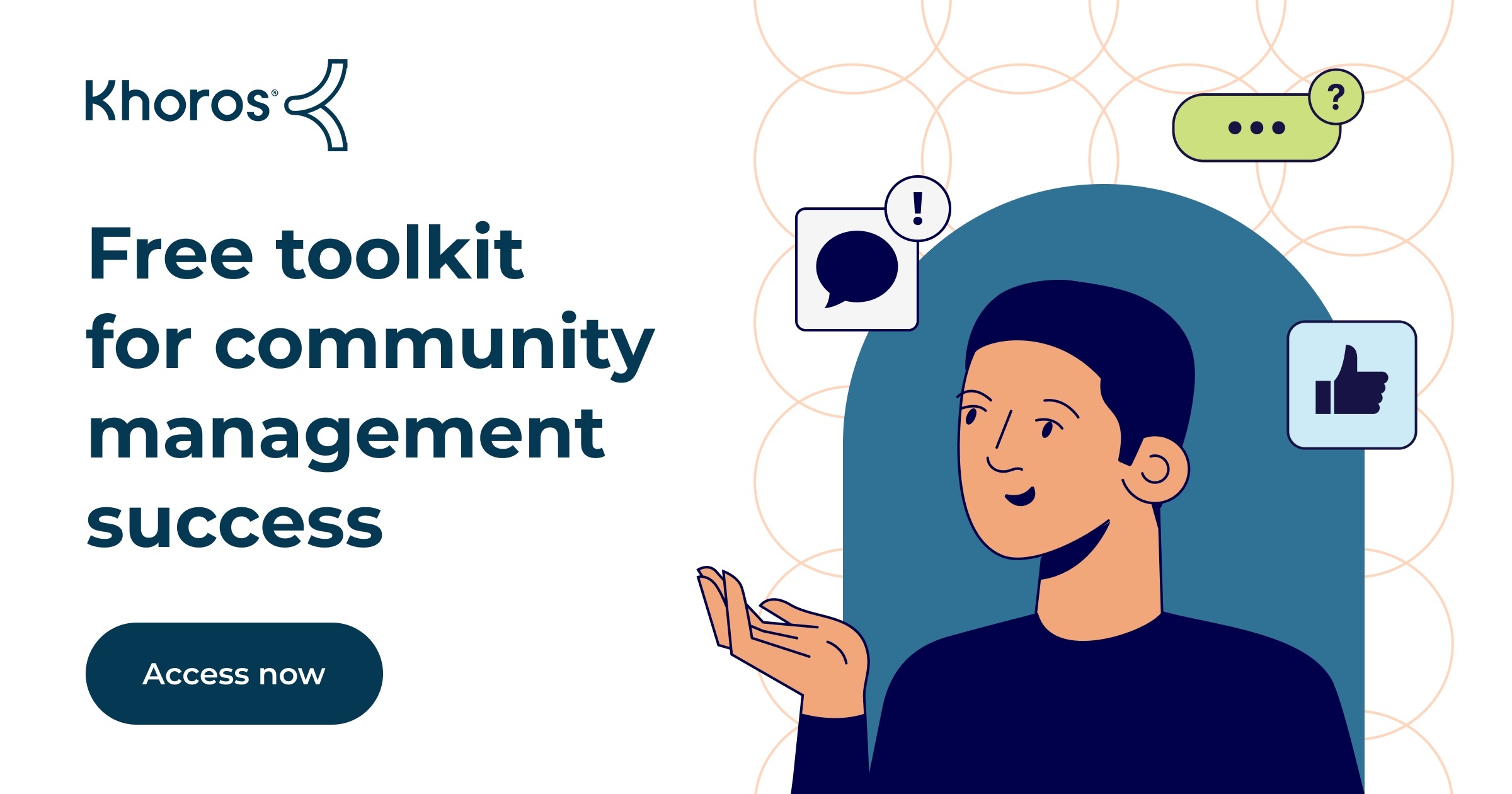 Logo
Logo
EXPERT INSIGHTS
May-15-2025
What is customer advocacy? Importance, types, strategy, and tips
Khoros Staff
Every brand wants to make its customers happy, and most will be satisfied knowing their customers have great things to say about them. However, the efforts should never stop there. While positive customer feedback is essential to brand success, turning these satisfied customers into advocates is key to long-term loyalty and attracting new customers in the process.
In this article, we’ll discuss what customer advocacy is and why it’s so important to have a customer advocacy strategy.
What is customer advocacy?
Customer advocacy is the practice of building and nurturing customer relationships to turn satisfied customers into advocates who promote your products and services to others. Customer advocates share their positive experiences and enthusiasm for your brand through word of mouth, social media, reviews, and other online channels.
In order to infuse customer advocacy into all aspects of your business, you need to adopt a framework build around customer needs. First, consider what exactly your customer needs. Much like Maslow’s hierarchy of needs for human development, advocates have their own needs and motivations as they progress through the customer lifecycle and your advocate marketing program.

Why is customer advocacy important?
Businesses that adopt a mindset of customer advocacy improve loyalty by ensuring customer needs are not only being met, but exceeded. By exceeding expectations, satisfied customers share their experiences, which helps to attract new customers. There’s a well-known business adage that it costs 5-7 times more to acquire a new customer than retain an existing one — but customer advocacy helps businesses do both.
Additionally, there’s a lot of research supporting the effectiveness of customer advocacy:
88% of consumers trust recommendations from people they know more than any other channel (Nielson)
Customers who are referred by others have an 18% lower churn rate and 16% higher customer lifetime value than customers acquired through other marketing methods (Goethe University and the University of Pennsylvania)
54% of B2B marketers say that referral programs have a lower cost-per-lead than other channels (Forbes)
Customer advocacy shouldn’t be treated as a standalone initiative — it should be embedded across every function of the business. From product development to marketing and customer service, prioritizing the customer ensures that products meet real needs, campaigns resonate, and post-purchase experiences build lasting satisfaction.

When advocacy is woven throughout the entire customer journey — from the first interaction to ongoing support — it empowers brands to consistently act in the customer’s best interest. The result: stronger brand loyalty and customers who become advocates themselves.
Types of customer advocacy
Customer advocacy comes in many forms. Some of these are organic, while others require your brand to initiate reaching out to customers.
Social sharing
Advocacy through sharing your business's blogs, announcements, or re-sharing your brand’s social media posts across channels. According to the 2022 Employee Advocacy Benchmark Report, having an employee advocacy program increases the total social engagement for a brand by 25% to 40% at minimum.
Testimonials
Sharing customer experiences through a statement or quote. Customers might post testimonials on your website, social media, brand community, or other channels. These are public endorsements that generate awareness, but you can also add them to your website as a form of social proof.
Case studies
These are similar to testimonials in that they share a customer success story, only with more detail. Case studies are important when businesses offer a complex solution or product. These can be used by teams to showcase prior customer successes from start to finish.
Referrals
A referral is when a customer advocate recommends a business’ product or service to their peer directly.
Webinars, podcasts, and conferences
If your organization hosts an event, inviting your customers to come to speak on is a powerful form of advocacy. Viewers trust an outside look and it’s also an opportunity for brand promotion for the customer. The 2021 LinkedIn-Edelman B2B Thought Leadership Impact Report states that 47% of buyers say thought leadership helped them discover and purchase from a company that was not a leader in their industry.
Reviews
Reviews are customer feedback on a specific product or service that can be shared. Reviews can include a detailed overview of the product, support capabilities, the customer experience that was provided, shipping, and additional information.
What is a customer advocacy program?
A customer advocacy program is a marketing and customer success strategy that intentionally converts loyal customers into vocal advocates for a brand. The program allows companies to formalize and scale the process of asking customers to speak about products they love.
Advocacy programs can increase a company's revenue in many ways:
They improve retention, loyalty, and cross-sell and upsell opportunities among current customers. Plus, they also generate valuable social proof from customers like reviews, referrals, and testimonials that can fuel demand generation and acquisition more effectively than traditional marketing tactics.
Companies continue to rapidly invest in customer advocacy and online customer community programs. The 2022 Intuitive State of the Customer Report states that 85% of respondents have a customer advocacy program, while 82% have an online customer community. Compared to 2020 results, where 74% of respondents said they had a customer advocacy program and 72% had an online customer community, there has been double-digit growth in both areas. This shows that customer advocacy and online community programs continue to mature at a rapid pace, and are poised to approach a near 100% adoption rate over the coming years.

It's easy to see why businesses are all about their customer advocacy programs. But what is the goal of the customer in this type of program? Every customer advocate has to get more out of the program than what they put in. That is the key to successful customer advocacy. Customers have their own motivations and businesses should use personalization to tap into these specific motivations when creating a customer advocacy strategy.
Customer advocate personas
A customer advocate persona is meant to embody the needs and priorities of people who have already become customers. These advocates are enthusiastic customers, partners, and employees who will happily share their experience of your brand with their networks. Here are a few examples of different customer advocate personas.
Status seekers: Customers with a large network who can be brutally honest. Their honesty attracts their following, they won’t be afraid to point out mistakes. They are strong speakers and are likely to do well at podcasts, webinars, and live events.
Educators: Every online product forum has a few people who focus on helping others understand better. This dedication to teaching is a great trait for advocacy. These clients are patient, willing to help others, and are great spokespeople.
Validators: They are a business’s authentic customers, groomed through various months or years of using the product or service. Their experience makes them credible and fair.
Collaborators: These individuals are building their own network through reciprocal arrangements. Collaborators can be influential advocates and are ideal for business reviews and other joint ventures.
How to implement a customer advocacy strategy
Most companies want a mindset focused on customer advocacy, but it's often difficult to know where to begin. Here are some strategies for a holistic approach to customer advocacy.
1. Define a goal
Define a primary goal for your customer advocacy program. Do you want to generate more revenue, grow awareness, or something else? Businesses need to take time to consider how their vision aligns with their goals to enhance their customer advocacy. You should also map out your customer advocacy vision to ensure the entire organization is on the same page. This will show how customer advocacy can touch every aspect of the business. When mapping out the customer advocacy vision, outline the steps you need to take to execute the strategic advocacy priorities and the metrics you will use. This allows businesses to measure success as new advocacy initiatives are introduced.
2. Define the persona of the advocate
As mentioned earlier, there are different types of customer advocate personas. Businesses can build a persona by evaluating needs within their customer life cycle and analyzing customer details like demographics, transaction history, and net promoter scores (NPS). Advocate personas should help the brand understand what will drive engagement and build stronger relationships with its customers. Once you determine what they value most and how they’d like to advocate, you can start to build a program.
3. Recruit advocates
Once you understand the type of customer advocates you want to recruit, the next step is to invite them to participate. When inviting potential advocates, businesses should focus on emphasizing the benefits to the customer. This is where incentives come in; in exchange for a customer's time and effort, businesses can offer them perks such as rewards, preferential service levels for support issues, opportunities to speak at events, or advanced access to product development. Businesses can also highlight the promotional value of becoming an advocate, such as the publicity and recognition of their own accomplishments within their market.
4. Launch the customer advocacy program
Once a business has recruited advocates and set goals for its program, they are ready to put its customer advocacy program into motion. Businesses should assign a point person or group who can spearhead customer advocacy efforts and focus on building and nurturing a balanced group of customer advocates. One of the most important aspects of this launch is choosing the right technical solutions to support the customer advocacy program. Naturally, as we saw above, many businesses choose online communities, which have built-in gamification features that can enhance any customer advocacy program.
5. Track success
Allow at least six months for the program to get into motion. Businesses should check the progress toward the goals they set by analyzing outcome metrics such as revenue influenced, win rate, sales cycle compression, NPS, and customer advocates’ influence rating. Customer advocacy tools can help a business prepare and interpret reports with these metrics and suggest areas to focus on improving.
Tips for a successful customer advocacy program
Collect feedback
For a customer advocacy program to be successful, your brand needs to understand customers. Collecting feedback after interactions is a great way to get customer input on your products, services, experience, and your brand in general. You can ask customers for feedback after a service interaction, or prompt users with surveys after they complete actions on your website. If you have an online community or a large social media following, you can also post questions and analyze responses in the comments. In addition to gathering valuable insights, requesting feedback also shows you care, which can improve customer retention.
Create avenues for advocacy
Go beyond the product or service to create avenues for advocacy. Businesses must start facilitating conversations and building online communities. Brand communities aren't just a place where users connect to answer questions, but they are also where a powerful group of advocates grows loyalty and trust by building their own reputations as helpful, trusted advisors and consultants.
Make it worth their time
Businesses must find new ways to bring value to their customer advocates. They can offer rewards like free products and discounts, or for B2B companies — have them speak to the media or at an event so that their brand gets a mention. It’s important to always remember that advocacy is a two-way relationship.
Leverage proactive listening and engagement
For businesses to really understand what their customers want, they need to constantly be listening. Businesses should proactively listen and engage with customers throughout the entire customer life cycle, from the moment they buy to the moment they renew and beyond. Real-time listening helps businesses help their customers achieve desired business outcomes more successfully. When outcomes are achieved, they are more likely to become invaluable advocates.
Use customer advocacy tools
Customer advocacy software, sometimes referred to as “advocacy marketing” or “referral marketing” software, is used by companies to enable their customers to promote their message, content, or products through word-of-mouth. These tools are used to help business marketing, sales, and success teams gather referrals and testimonials that can be used with prospects.
Khoros helps you find and create customer advocates
The most successful customer advocacy programs don’t just reward loyal customers — they empower them. By giving advocates a space to share expertise, connect with peers, and engage directly with your brand, you create lasting value for both your business and your customers. Khoros Communities makes this possible and features:
Customizable designs
Built-in engagement tools
Gamification options
Community analytics
Content management capabilities
Community moderation settings
Ready to build a community where your best customers become your biggest advocates? Request a demo to learn how Khoros Communities can help.














